Your cart is currently empty!
Blog
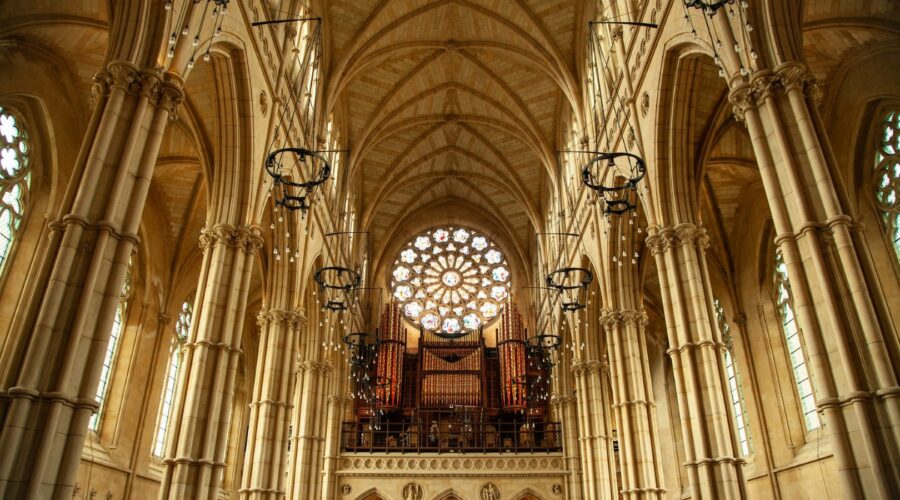
Unveiling the Heart of City Churches: A Comprehensive Guide
Introduction
In the bustling metropolises of today, city churches stand as beacons of faith and community amidst the vibrant urban landscape. They cater to the unique needs of city dwellers, offering spiritual solace, social support, and a sense of belonging in the heart of crowded environments.
Understanding the City Church’s Mission
Providing Spiritual Guidance and Worship
City churches offer a sanctuary for worship, reflection, and spiritual renewal. They host regular services, prayer meetings, and Bible study groups, fostering a deeper connection with God and a sense of purpose.
Creating a Community of Belonging
Beyond spiritual guidance, city churches play a pivotal role in building a sense of community. They organize social events, support groups, and outreach programs, providing a welcoming and inclusive space for individuals to connect with others and make meaningful relationships.
Addressing Urban Issues
City churches are keenly aware of the challenges faced by their communities. They actively engage in addressing social, economic, and environmental issues, such as poverty, homelessness, addiction, and climate change, through advocacy, partnerships, and direct assistance.
Benefits of Attending a City Church
Spiritual Growth and Development
Attending a city church provides an environment conducive to spiritual growth and development. Regular worship, Bible study, and prayer cultivate a deeper understanding of faith and strengthen one’s relationship with God.
Sense of Community and Belonging
City churches foster a strong sense of community and belonging. They offer opportunities to connect with other like-minded individuals, build relationships, and participate in meaningful activities that strengthen the bonds between members.
Urban Ministry and Outreach
By attending a city church, individuals can actively participate in addressing urban issues. They can join outreach programs, volunteer their time, and support initiatives that make a positive impact on their community.
Tips for Choosing a City Church
Consider Your Spiritual Needs
Different city churches have varying theological perspectives and worship styles. It’s important to find a church that aligns with your spiritual beliefs and preferences.
Explore the Church’s Mission and Values
Learn about the church’s mission statement, outreach programs, and core values. These can provide insights into the church’s priorities and the impact it seeks to have on the community.
Visit the Church and Its Community
Attend a service or participate in a community event to experience the church’s atmosphere and connect with its members. This can help you determine if it’s a good fit for you.
Conclusion
City churches are vibrant and essential components of urban communities, providing spiritual guidance, fostering a sense of belonging, and addressing pressing urban issues. By choosing a city church that aligns with their needs and values, individuals can embark on a meaningful journey of spiritual growth, community involvement, and impactful service.
Factors to Consider When Choosing a City Church Factor Description Spiritual Needs Theological beliefs, worship style, and spiritual practices Mission and Values Outreach programs, core values, and impact on the community Community and Involvement Social events, support groups, and opportunities to serve 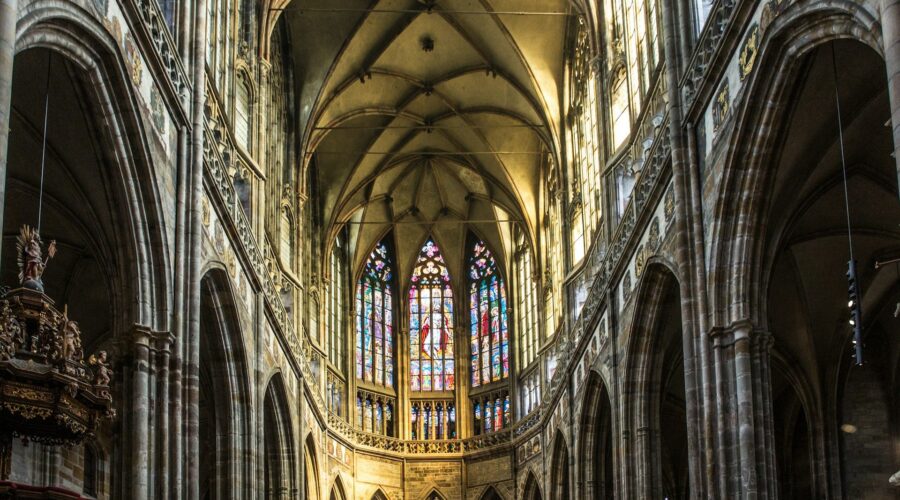
Sunday Catholic Mass Today: A Comprehensive Guide
Introduction
Sunday Mass, the central liturgy of the Catholic Church, is a sacred gathering where Catholics come together to worship God and receive the Eucharist. Understanding the various aspects of Sunday Mass can deepen your appreciation for this important sacrament.
Structure of Sunday Mass
- Introduction: Greeting, Penitential Act, and Gloria
- Liturgy of the Word: Readings, Responsorial Psalm, Gospel, and Homily
- Liturgy of the Eucharist: Offertory, Eucharistic Prayer, Consecration, Communion, and Prayer After Communion
- Concluding Rites: Blessing, Announcements, and Dismissal
Introduction
The Mass begins with a greeting from the priest, followed by the Penitential Act to prepare the congregation for the Eucharist. The Gloria, an ancient hymn, is sung to glorify God.
Liturgy of the Word
This section includes readings from the Old and New Testaments, the singing of a Responsorial Psalm, the reading of the Gospel, and a Homily (sermon) by the priest.
Liturgy of the Eucharist
The Eucharist is the heart of the Mass. The Offertory involves the presentation of bread and wine as gifts to God. During the Eucharistic Prayer, the priest consecrates the bread and wine, transforming them into the Body and Blood of Christ.
Consecration
The Consecration is the most sacred moment of the Mass, when the bread and wine become the real presence of Christ. The congregation kneels in reverence.
Communion
After the Consecration, the priest distributes Communion (the Body and Blood of Christ) to the congregation. It is an opportunity for Catholics to receive the grace and nourishment of the Eucharist.
Concluding Rites
The Mass ends with a Blessing from the priest, announcements, and the Dismissal, where the congregation is sent forth to live out the teachings of the Gospel.
Meaning and Importance of Sunday Mass
- Encounter with Christ: Mass is a personal encounter with Jesus Christ in the Eucharist.
- Sacrifice and Renewal: It commemorates the sacrifice of Christ on the cross and renews the Covenant between God and humanity.
- Community Building: Mass is a gathering of the Catholic community, fostering unity and support.
- Spiritual Nourishment: The Eucharist provides spiritual sustenance and nourishment for the soul.
Tips for Meaningful Participation
For a more meaningful participation in Mass, consider these tips:
- Come prepared: Read the readings beforehand and reflect on their meaning.
- Be present: Focus on the liturgy and minimize distractions.
- Participate actively: Join in the responses, songs, and prayers.
- Receive Communion: If you are a baptized Catholic, receive Communion regularly to receive the grace and nourishment of the Eucharist.
Frequently Asked Questions
- What is the difference between the Ordinary Form and the Extraordinary Form of Mass?
- The Ordinary Form, also known as the Novus Ordo, was introduced in 1969 and is the most common form of Mass today. The Extraordinary Form, also known as the Traditional Latin Mass, is an older, more traditional form of the Mass.
- Who can receive Communion?
- Baptized Catholics who are not conscious of any serious sin may receive Communion.
- What should I wear to Mass?
- Dress modestly and respectfully, as a sign of reverence for the Eucharist.
Conclusion
Sunday Catholic Mass is a sacred and transformative experience that brings Catholics together in worship and communion with God. Understanding the structure, meaning, and importance of Mass can deepen your appreciation for this foundational sacrament. By participating actively and meaningfully, you can receive the grace and nourishment that Mass offers.
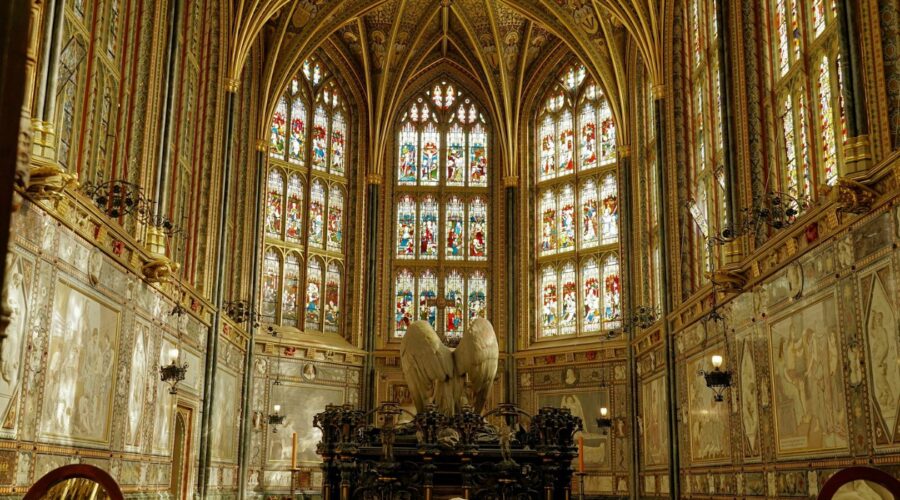
St. Joseph: A Comprehensive Guide to His Life, Role, and Significance
Who was St. Joseph?
Saint Joseph, also known as Joseph the Carpenter or Joseph of Nazareth, was the husband of the Virgin Mary and the earthly father of Jesus Christ. He played a pivotal role in the life of Jesus and the early Christian Church.
Life of St. Joseph
Early Life
Joseph was a descendant of King David and lived in Nazareth. He was a skilled carpenter and a righteous man.
Betrothal to Mary
Joseph was betrothed to Mary, a young woman from the same village. When Mary became pregnant by the Holy Spirit, Joseph initially considered divorcing her but was instructed by an angel to protect Mary and her child.
Birth of Jesus
Joseph accompanied Mary to Bethlehem for the census. Jesus was born in a stable because there was no room at the inn. Joseph provided shelter and care for Mary and her newborn son.
Flight to Egypt
After the birth of Jesus, Joseph was warned by an angel to flee to Egypt with his family to escape the persecution of King Herod. They stayed in Egypt until Herod’s death.
Return to Nazareth
Upon hearing of Herod’s demise, Joseph returned to Nazareth with Mary and Jesus. They lived in obscurity, and Joseph continued to work as a carpenter.
Role of St. Joseph
Earthly Father of Jesus
Joseph provided Jesus with earthly protection, guidance, and love. He taught Jesus the carpentry trade and raised him as his own son.
Protector of the Holy Family
Joseph was the protector of Mary and Jesus. He provided them with shelter, food, and security.
Model of Righteousness and Chastity
Joseph is considered a model of righteousness and chastity. He obeyed God’s will, even when it was difficult.
Significance of St. Joseph
St. Joseph is a highly venerated figure in Christianity. He is:
- The patron saint of fathers, workers, and the dying.
- An intercessor for family unity and protection.
- A symbol of humility, obedience, and faithfulness.
Devotion to St. Joseph
Devotion to St. Joseph has been practiced for centuries. Among the popular devotions are:
- The Litany of St. Joseph
- The Novena to St. Joseph
- The Feast of St. Joseph (March 19)
Table: Feast Days of St. Joseph
Feast Day Date Feast of St. Joseph the Worker May 1 Feast of the Holy Family December 26 Tips for Praying to St. Joseph
- Pray with a sincere heart and have faith in Joseph’s intercession.
- Offer specific prayers for your needs or those of others.
- Pray regularly and consistently.
Conclusion
St. Joseph was a righteous man who played a crucial role in the life of Jesus Christ. His example of humility, obedience, and faithfulness continues to inspire Christians today. Devotion to St. Joseph is a powerful way to seek his intercession and receive his blessings.

The Immaculate Conception: Unraveling the Divine Mystery
Introduction
The Immaculate Conception, a central doctrine in the Catholic faith, holds a profound significance in understanding the unique nature of Mary, the mother of Jesus Christ. It asserts the notion that Mary was conceived without the stain of Original Sin, bestowed upon all humans after the Fall of Adam and Eve. This blog post aims to delve into the intricacies of this doctrine, exploring its historical evolution, theological underpinnings, and its relevance in Christian spirituality.
Origins and Historical Development
The concept of the Immaculate Conception emerged gradually over centuries. In the early centuries of Christianity, there was no explicit teaching on this subject. However, by the 12th century, some theologians began to propose the idea of Mary’s sinlessness from the moment of her conception.
The doctrine was first formally defined by Pope Pius IX in 1854. In the papal bull, “Ineffabilis Deus,” he declared:
“We define that the doctrine which holds that the most Blessed Virgin Mary, in the first instant of her conception, by a singular grace and privilege granted by Almighty God, in view of the merits of Jesus Christ, the Savior of mankind, was preserved immune from all stain of original sin, is a doctrine revealed by God, and that therefore it must be firmly and constantly believed by all the faithful.”
Theological Basis
The Immaculate Conception is rooted in several theological principles:
- The Universal Redemption: The belief that Jesus Christ, through his death and resurrection, redeemed all humans from the effects of Original Sin.
- The Role of Mary in Salvation: Mary is seen as the “New Eve,” who played a pivotal role in the plan of salvation by giving birth to Jesus Christ.
- The Preservation from Sin: The doctrine holds that Mary was preserved from Original Sin by God’s grace, in view of her unique role as the mother of Christ.
Implications for Christian Spirituality
The Immaculate Conception has profound implications for Christian spirituality:
- Sanctity of Mary: It emphasizes the unique and exceptional nature of Mary, who is seen as a model of holiness and purity.
- God’s Love for Humanity: The doctrine demonstrates God’s boundless love and mercy, which extends even to the preservation of Mary from the effects of sin.
- Hope and Inspiration: Mary’s Immaculate Conception provides hope and inspiration to believers, reminding them of the possibility of redemption and holiness.
Mary in the Bible
While the phrase “Immaculate Conception” does not appear in the Bible, there are several passages that provide support for the doctrine:
- The Annunciation: In the Gospel of Luke, the angel Gabriel addresses Mary as “full of grace” (Luke 1:28).
- The Visitation: Elizabeth, Mary’s cousin, greets her with the words, “Blessed are you among women, and blessed is the fruit of your womb” (Luke 1:42).
- The Magnificat: Mary’s song of praise includes the line, “My soul glorifies the Lord; my spirit rejoices in God my Savior” (Luke 1:46-47).
Objections and Controversies
The doctrine of the Immaculate Conception has faced objections and controversies over the centuries:
- Sola Scriptura: Protestants who adhere to the principle of sola scriptura (Scripture alone) argue that the doctrine is not explicitly stated in the Bible.
- Natural Logic: Some argue that it is illogical for a human being to be conceived without the stain of Original Sin.
- Implications for Mary’s Humanity: Critics question whether the doctrine undermines Mary’s humanity by making her too divine.
Conclusion
The Immaculate Conception is a complex and nuanced doctrine that has been debated and refined throughout Christian history. While it may not be explicitly stated in the Bible, it is rooted in theological principles and biblical passages that provide support for the idea that Mary was preserved from Original Sin from the moment of her conception. The doctrine emphasizes the unique nature of Mary, her role in salvation history, and the boundless love and mercy of God. It continues to be a source of inspiration and hope for Christians around the world.
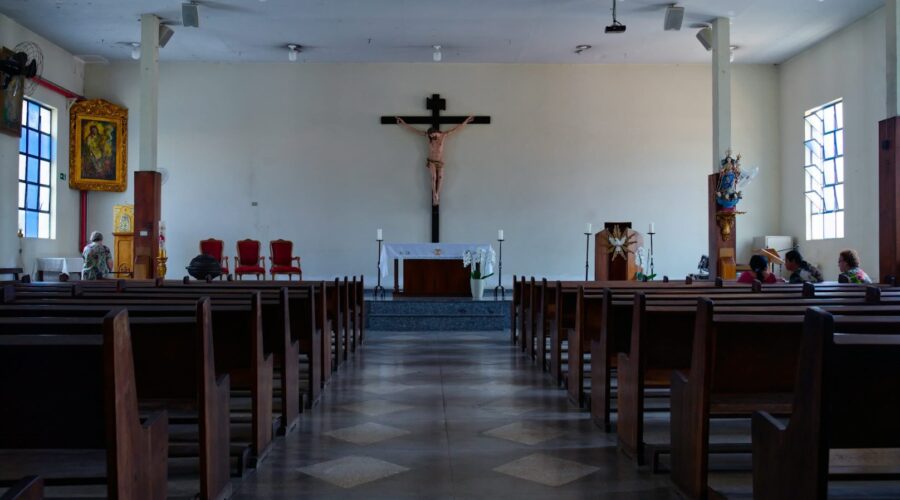
Discover the Historic and Spiritual Significance of the Church of the Resurrection
Nestled amidst the bustling Holy Land, the Church of the Resurrection stands as a testament to the transformative power of faith and the significance of the Christian tradition. Embark on a journey through its hallowed halls and uncover the profound stories and architectural wonders that have captivated pilgrims for centuries.
A Historical Timeline of the Church
The history of the Church of the Resurrection is intertwined with the pivotal events of Christianity:
- 1st Century: The crucifixion of Jesus Christ is believed to have occurred on Golgotha, where the church is now situated.
- 4th Century: Emperor Constantine commissioned the construction of a basilica to commemorate the resurrection of Jesus.
- 614: The Persians destroyed the basilica during their invasion of Jerusalem.
- 630: The Byzantine Empire rebuilt the church, incorporating the remains of the original structure.
- 11th Century: The Crusaders renovated the church, adding the distinctive dome and bell towers.
- 19th Century:Extensive renovations were undertaken by the Franciscan Order and the Church of Greece.
Architectural Marvels
The Church of the Resurrection is a masterpiece of Byzantine and Romanesque architecture:
Exterior
- The Dome: The gilded dome, a prominent landmark, symbolizes the heavens and the resurrection of Jesus.
- The Bell Towers: Two iconic bell towers flank the dome, each adorned with intricate carvings and biblical scenes.
- The Facade: The main entrance features a series of arched doorways and windows decorated with mosaic tiles.
Interior
- The Rotunda: The central rotunda houses the Tomb of Christ, the holiest site in the church.
- The Aedicule: The marble shrine enclosing the Tomb is a work of exquisite art and symbolizes the empty tomb and the resurrection.
- The Chapels: Numerous chapels surround the rotunda, each dedicated to different saints and events.
Religious Significance
The Church of the Resurrection holds immense significance for Christians worldwide:
The Crucifixion and Resurrection
The site of Golgotha, where Jesus is believed to have been crucified, is marked by the Altar of the Crucifixion. Nearby, the Tomb of Christ represents the empty grave from which Jesus rose.
Pilgrimage and Spirituality
For centuries, pilgrims have flocked to the Church of the Resurrection, seeking spiritual enlightenment and a connection to the events of Christianity. The church provides an atmosphere of reverence and awe, conducive to reflection and prayer.
Visitor Information
Planning a visit to the Church of the Resurrection:
Location:
Christian Quarter, Old City of JerusalemHours:
- Monday – Saturday: 5:00 AM – 6:00 PM
- Sunday: 5:00 AM – 1:30 PM
Tips:
- Dress respectfully and cover your shoulders and knees.
- Be prepared for crowds, especially during peak season.
- Allow ample time for your visit to fully appreciate the church’s beauty and significance.
- Take advantage of the guided tours offered by local churches or tour companies.
Additional Resources
- Official website of the Church of the Holy Sepulchre
- Wikipedia article on the Church of the Holy Sepulchre
- Sacred Destinations: Church of the Holy Sepulchre
Conclusion
The Church of the Resurrection is a living testament to the power of faith and the enduring legacy of Christianity. Its architectural splendor and religious significance make it a must-visit destination for pilgrims and tourists alike. By exploring its hallowed halls, we connect with the transformative events that shaped our world and gain a deeper understanding of the spiritual journey.
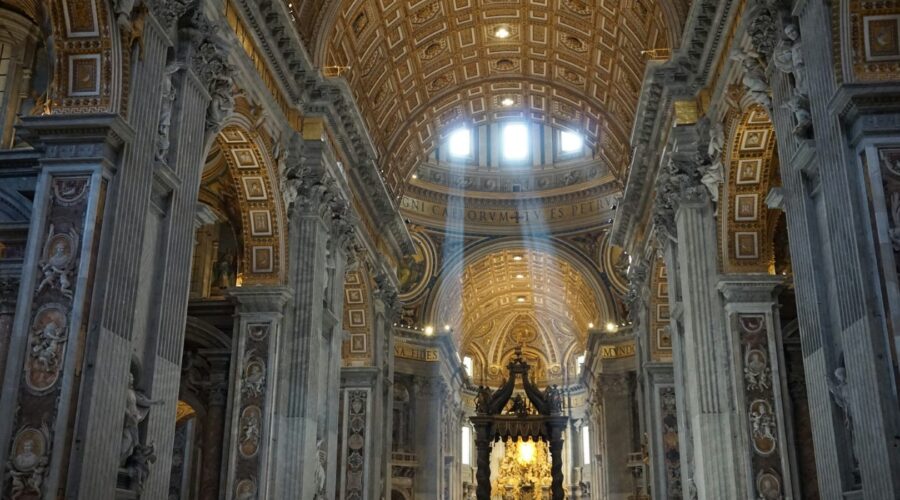
Unveiling the Transformative World of Church Camp: A Comprehensive Guide
Introduction
Church camp is a transformative experience that has left an enduring mark on the lives of countless young people. It offers a unique blend of spiritual growth, adventure, and lasting friendships. As the summer months approach, many churches begin planning their annual camp programs, and it is crucial for parents, guardians, and youth leaders to be well-informed about the benefits, logistics, and expectations of this enriching experience.
Benefits of Church Camp
Attending church camp offers a myriad of benefits for young people:
- Spiritual Growth: Camp provides a nurturing environment where youth can deepen their faith and connect with God through worship, Bible study, and reflection.
- Personal Development: Campers develop valuable life skills such as independence, responsibility, and communication through their daily activities and interactions.
- Community Building: Camp fosters a sense of belonging and fellowship as youth form close bonds with peers and adult leaders.
- Outdoor Education: Many camps offer opportunities for outdoor activities like hiking, archery, and swimming, which promote physical fitness and an appreciation for nature.
- Memory-Making: Camp is a time for unforgettable experiences and memories that will be cherished for a lifetime.
Types of Church Camps
There are various types of church camps tailored to different age groups and interests:
- Children’s Camps: Designed for younger children, these camps prioritize age-appropriate activities, games, and spiritual teachings.
- Youth Camps: Cater to middle and high school students, offering a more challenging and engaging curriculum that includes Bible study, leadership development, and community service.
- Family Camps: Bring together families for a shared spiritual experience, offering activities and programs for all ages.
- Adventure Camps: Provide outdoor adventure activities such as white-water rafting, rock climbing, and hiking, combined with spiritual teachings.
- Music and Arts Camps: Focus on developing musical or artistic talents while fostering spiritual growth through music, dance, or visual arts.
Choosing the Right Camp
Selecting the right church camp is crucial to ensure a rewarding experience for the camper. Consider the following factors:
- Age and Interests: Choose a camp that aligns with the camper’s age group and interests.
- Location and Facilities: Consider the camp’s location, living accommodations, and amenities to ensure they meet the camper’s needs.
- Cost: Determine the cost of the camp and explore scholarship options if necessary.
- Staff: Inquire about the experience and qualifications of the camp staff, including their spiritual maturity and ability to provide a safe and nurturing environment.
- Health and Safety: Verify the camp’s health and safety protocols, including medical staff availability and emergency procedures.
Logistics
Once a camp has been selected, parents and guardians need to prepare for the logistics:
- Registration: Complete the camp registration form and submit all required documentation on time.
- Packing: Pack appropriate clothing, toiletries, bedding, and any necessary medications or supplies.
- Travel Arrangements: Determine how the camper will travel to and from camp, and inform camp staff of any special arrangements.
- Health Information: Provide the camp with any relevant health information, allergies, or medications the camper has.
- Communication: Establish clear communication channels with camp staff in case of emergencies or any issues.
Expectations
It is important to set clear expectations for the camper before they attend church camp:
- Behavior: Explain that respectful and responsible behavior is expected at all times.
- Safety: Emphasize the importance of following all camp rules and regulations for their safety and well-being.
- Spiritual Growth: Encourage the camper to actively participate in spiritual activities and reflect on their faith.
- Participation: Explain that participation in all camp activities is encouraged and beneficial.
- Homesickness: Discuss strategies for coping with homesickness, such as communicating with loved ones or participating in group activities.
Impact of Church Camp
The impact of church camp can be profound and long-lasting:
- Strengthened Faith: Many campers return from church camp with a deepened faith and a stronger connection with God.
- Personal Growth: Camp experiences help campers develop self-confidence, independence, and leadership skills.
- Community Engagement: Church camp fosters a sense of community and encourages involvement in church and youth groups.
- Lifelong Memories: The memories and friendships made at church camp often last a lifetime.
- Continuing Spiritual Journey: Camp can ignite a passion for spiritual growth and set a foundation for ongoing faith development.
Conclusion
Church camp is an invaluable experience that offers young people a transformative opportunity for spiritual growth, personal development, and community building. By carefully choosing the right camp and preparing adequately, parents and guardians can ensure that their child has a safe, enriching, and unforgettable experience. The impact of church camp extends far beyond the summer months, fostering a lifelong journey of faith, community, and personal fulfillment.
Further Resources
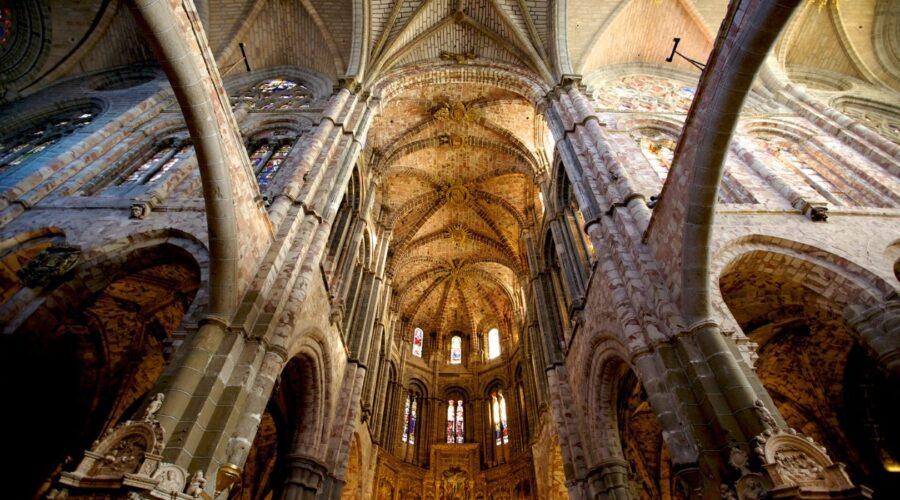
The Ultimate Guide to Lampstands: Illuminating Your Home with Style
Introduction
Lampstands are an essential part of any home decor, providing both illumination and a touch of elegance. From classic to contemporary styles, there is a lampstand to complement any taste and decor scheme. This comprehensive guide will delve into the world of lampstands, exploring their types, materials, styles, and tips for selecting the perfect one for your home.
Types of Lampstands
- Floor Lampstands: Stand tall and provide ambient lighting, perfect for corners or reading nooks.
- Table Lampstands: Sit on tables or nightstands, providing task lighting and a cozy ambiance.
- Wall Lampstands: Mounted on walls, they save space and create a dramatic focal point.
- Pendant Lampstands: Hang from the ceiling, providing overhead lighting and a modern touch.
Materials for Lampstands
- Wood: Classic and timeless, wood lampstands add warmth and natural beauty to a room.
- Metal: Durable and versatile, metal lampstands come in various finishes, from polished to matte.
- Glass: Adds elegance and sophistication, allowing light to filter through and illuminate surroundings.
- Ceramic: Handcrafted and unique, ceramic lampstands display intricate patterns and glazes.
Styles of Lampstands
- Traditional: Classic designs with intricate carvings, ornate details, and rich finishes.
- Contemporary: Clean lines, geometric shapes, and bold colors, adding a touch of modernity to any space.
- Industrial: Raw materials and exposed hardware, evoking a factory-chic aesthetic.
- Rustic: Natural materials such as wood or wrought iron, creating a cozy and inviting ambiance.
Factors to Consider When Selecting a Lampstand
- Room Function: Determine the purpose of the lampstand, whether for ambient, task, or accent lighting.
- Decor Style: Choose a lampstand that complements the existing decor and style of the room.
- Size and Scale: Ensure the lampstand is proportionate to the size of the room and furniture.
- Light Source: Consider the type of light bulb (LED, incandescent, etc.) and brightness needed for the space.
- Budget: Set a budget and research different options to find a lampstand that fits both your needs and finances.
Tips for Styling with Lampstands
- Create a Focal Point: Use a statement lampstand as a focal point to draw attention.
- Layer Lighting: Combine different types of lampstands to create multiple layers of illumination.
- Accessorize with Lampshades: Choose a lampshade that complements the style of the lampstand and adds a touch of personality.
- Play with Height: Vary the heights of lampstands to create interest and depth.
- Consider Usage: Select lampstands with features such as dimmers or adjustable necks for convenience and flexibility.
Conclusion
Lampstands are not just sources of light; they are decorative elements that can transform the ambiance and style of a room. By understanding the different types, materials, styles, and factors to consider, you can select the perfect lampstand to illuminate your home with both function and beauty. Whether it’s a classic wooden floor lampstand or a modern glass pendant lampstand, there is a lampstand to suit every taste and decor scheme. Embrace the art of illumination and let your lampstands be the shining stars of your home.
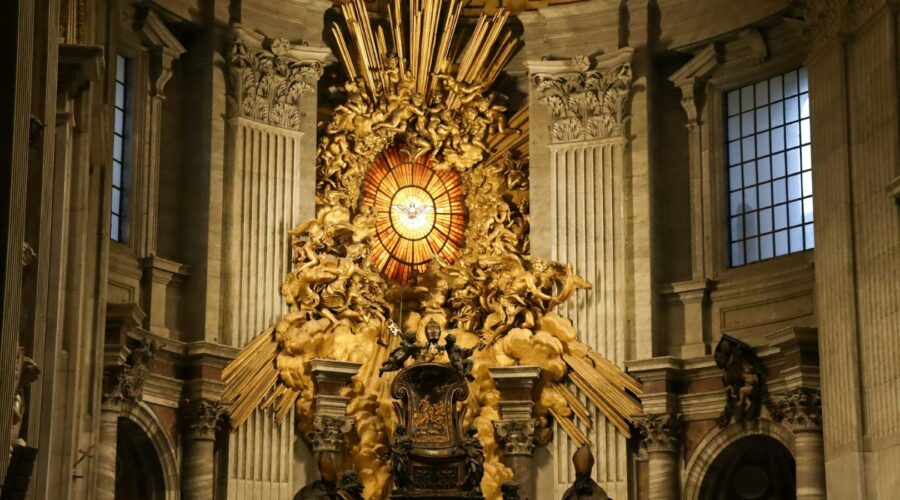
Discover a Spiritual Home: Find the Perfect Black Baptist Church Near You
Introduction
In the vibrant tapestry of faith communities, Black Baptist churches stand as beacons of spiritual guidance, fellowship, and service. Whether you’re seeking a spiritual home or simply exploring the diversity of religious experiences, finding a Black Baptist church near you can be a transformative journey.
Understanding Black Baptist History and Theology
Black Baptist churches trace their roots to the mid-18th century, emerging from a desire for African American Christians to establish their own worship spaces and participate in church leadership. Over time, these churches have developed a distinct theological tradition that emphasizes:
- The authority of the Bible as the Word of God
- The importance of personal faith and conversion
- The power of praise and worship
- The call to social justice and community service
Benefits of Attending a Black Baptist Church
Joining a Black Baptist church offers numerous benefits, including:
- Spiritual growth: Immerse yourself in a community that fosters spiritual growth through Bible study, worship, and prayer.
- Fellowship and community: Build meaningful relationships with other members who share your faith and values.
- Service and outreach: Participate in community service initiatives that address social issues and uplift the community.
- Leadership opportunities: Find opportunities to develop your leadership skills and make a difference within the church and beyond.
- Historical and cultural connection: Connect with the rich history and heritage of Black Baptist churches.
How to Find a Black Baptist Church Near You
Finding a Black Baptist church near you can be as simple as:
- Online directories: Use online directories like Google My Business, Yelp, and church location websites to search for “Black Baptist churches near me.”
- Community outreach: Attend community events and festivals where Black Baptist churches are likely to be present.
- Word-of-mouth: Ask friends, family, or colleagues for recommendations of Black Baptist churches in your area.
- Social media: Follow the social media pages of Black Baptist churches to stay updated on their events and activities.
Tips for Choosing the Right Church
When choosing a Black Baptist church, consider the following factors:
- Theological alignment: Ensure that the church’s theology aligns with your beliefs and values.
- Worship style: Determine if the church’s worship style resonates with you spiritually.
- Community involvement: Assess the church’s commitment to community service and outreach.
- Leadership and staff: Get to know the pastor, staff, and lay leaders of the church to build a relationship and trust.
- Personal connection: Attend services and events to get a feel for the church’s atmosphere and see if it feels like a place where you can belong.
Examples of Notable Black Baptist Churches
Throughout history, Black Baptist churches have played a pivotal role in shaping the African American community and the nation as a whole. Some notable examples include:
- African American Baptist Church of Philadelphia (Mother Bethel): Founded in 1794, it is the oldest African American Baptist congregation in the United States.
- National Baptist Convention, USA: The largest African American Baptist denomination in the world, with over 8 million members.
- Ebenezer Baptist Church (Atlanta): Pastored by Dr. Martin Luther King Jr., this church became the epicenter of the Civil Rights Movement.
Conclusion
Finding a Black Baptist church near you is more than just a location; it is about finding a spiritual home, a community of faith, and a platform for service. By embracing the rich history, theology, and benefits of Black Baptist churches, you can embark on a transformative journey of personal growth, fellowship, and impact.

Discover the Warmth of Reformed Fellowship: Churches Near You
An Introduction to Reformed Churches
Reformed churches are a branch of Christianity that traces its roots back to the Protestant Reformation of the 16th century. They are known for their emphasis on the sovereignty of God, the authority of Scripture, and the centrality of Christ in salvation.
Finding a Reformed Church Near You
There are several ways to find a Reformed church near you:
- Online directories: Websites like Reformed.org and PCA.org offer searchable directories of Reformed churches.
- Social media: Many churches have active social media pages where you can connect with them and ask about their beliefs and services.
- Word of mouth: Talk to friends, family, or colleagues who attend a Reformed church for recommendations.
Types of Reformed Churches
There are several different denominations within the Reformed tradition, each with its own unique characteristics:
- Presbyterian Church in America (PCA): A large and diverse denomination with a strong emphasis on missions and evangelism.
- Orthodox Presbyterian Church (OPC): A smaller and more traditional denomination known for its strict adherence to Reformed doctrine.
- Christian Reformed Church (CRC): A denomination with a Dutch heritage, known for its emphasis on Christian education and community involvement.
- Reformed Church in America (RCA): A historically Dutch denomination that has a more liberal and ecumenical outlook.
What to Expect at a Reformed Church
Worship services at Reformed churches typically include:
- Sermon: A teaching from the Bible that is central to the service.
- Prayer: Time set aside for prayer, both corporate and individual.
- Singing: Hymns and contemporary worship songs are used to praise God.
- Communion: Bread and wine are served to remember Christ’s death and resurrection.
Benefits of Attending a Reformed Church
There are many benefits to attending a Reformed church:
- Biblical teaching: Reformed churches place a high value on the authority of Scripture and strive to teach it faithfully.
- Strong community: Reformed churches often have a strong sense of community, where members support and encourage one another.
- Opportunities for growth: Churches offer a variety of programs and activities to help members grow in their faith and understanding of the Bible.
- Missions and outreach: Many Reformed churches are actively involved in missions and outreach, both locally and internationally.
Tips for Finding the Right Church
When looking for a Reformed church near you, consider the following tips:
- Visit multiple churches: Attend worship services at several different churches to get a feel for their atmosphere and beliefs.
- Talk to the pastor: Meet with the pastor to discuss the church’s mission, beliefs, and programs.
- Consider your personal beliefs: Make sure that the church’s teachings align with your own beliefs and values.
- Pray about it: Seek God’s guidance in finding a church where you can grow and serve Him faithfully.
Conclusion
Reformed churches are a vibrant and welcoming part of the Christian community. Whether you are new to faith or seeking a deeper connection with God, attending a Reformed church near you can provide you with spiritual nourishment, community, and opportunities for growth.
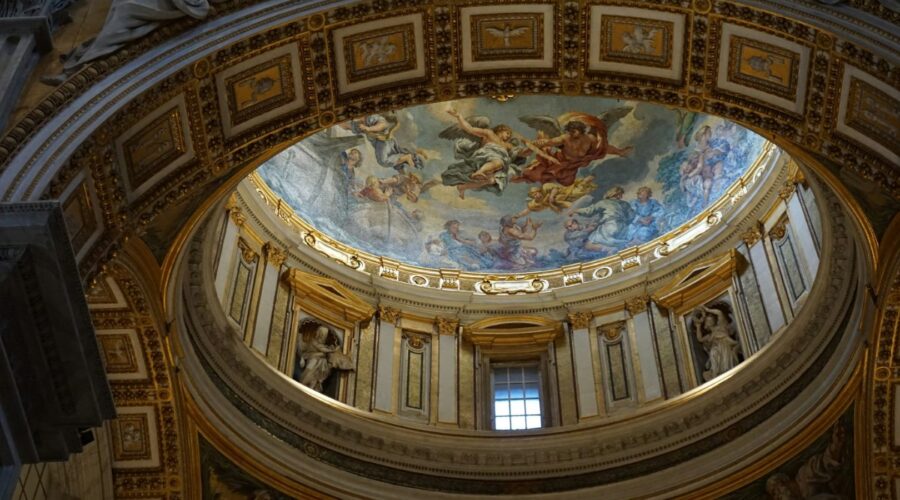
Unveiling the History, Beliefs, and Practices of the Anglican Church
Introduction
The Anglican Church, a distinctive branch of Christianity, has played a significant role in shaping the religious and cultural landscape of the world. From its historical origins to its diverse beliefs and practices, this blog post will delve into the depths of the Anglican Church, providing a comprehensive understanding of its complexities.
Origins and History
The roots of the Anglican Church can be traced back to the 6th century, when Augustine of Canterbury was sent by Pope Gregory I to Christianize the Anglo-Saxon kingdoms. Over the centuries, the English Church evolved independently, and in the 16th century, under the reign of Henry VIII, it broke away from the authority of the Pope.
Beliefs and Teachings
Theological Framework
- Trinity: The belief in one God in three persons: Father, Son, and Holy Spirit.
- Incarnation: The belief that Jesus Christ is both fully God and fully human.
- Resurrection: The belief in the physical resurrection of Jesus Christ from the dead.
li>Cleansing from Sin: The belief that human beings are redeemed from sin by the grace of God through faith in Jesus Christ.
Key Doctrines
The Anglican Church holds to a collection of key doctrines that define its beliefs:
- The Bible: The Scriptures are the primary source of faith and practice.
- The Creeds: The Apostles’ Creed, Nicene Creed, and Athanasian Creed are authoritative statements of belief.
- The Thirty-Nine Articles: A set of doctrinal statements from the 16th century that further articulate Anglican beliefs.
Practices and Worship
Anglican worship is characterized by a blend of tradition and modernity.
Liturgy and Sacraments
- Holy Communion (Eucharist): A central sacrament where bread and wine are consecrated and shared, representing the body and blood of Christ.
- Baptism: A sacrament of initiation into the Christian faith, symbolizing cleansing from sin.
- Confirmation: A sacrament in which baptized Christians affirm their faith and receive the Holy Spirit.
Common Prayer
The Anglican Church uses a comprehensive prayer book known as the Book of Common Prayer. This book contains set prayers, readings, and liturgies for various occasions.
Structure and Polity
The Anglican Church is organized into a hierarchical structure:
Bishops
- Oversee the dioceses (geographic regions) and ordain priests and deacons.
- Serve as spiritual leaders and chief pastors.
Priests
- Lead local congregations and administer the sacraments.
- Preach, teach, and provide pastoral care.
Deacons
- Assist priests in their ministry.
- Proclaim the Gospel, teach, and engage in social outreach.
Global Communion
The Anglican Church is a global communion of churches worldwide. These churches share a common heritage, beliefs, and practices while maintaining their own autonomy.
The Archbishop of Canterbury
- Serves as the symbolic head of the Anglican Communion.
- Presides over the Lambeth Conference, a gathering of Anglican bishops from around the world.
Contribution and Impact
The Anglican Church has made significant contributions to society:
Education and Healthcare
- Established numerous schools, universities, and hospitals.
- Promoted literacy and education among diverse communities.
Social Justice
- Advocated for the rights of marginalized groups, including women and the poor.
- Engaged in interfaith dialogue and promoted peace and reconciliation.
Challenges and Prospects
Like any organization, the Anglican Church faces challenges and opportunities:
Internal Issues
- Differing perspectives on issues such as the ordination of women and same-sex marriage.
- Balancing tradition with contemporary societal needs.
External Factors
- Secularization and the rise of other religious traditions.
- The changing global landscape and the need for adaptation.
Tips for Engaging with the Anglican Church
- Attend a local Anglican church and experience worship firsthand.
- Read the Book of Common Prayer to gain deeper insights into Anglican beliefs and practices.
- Engage with Anglican organizations and initiatives to learn about their work.
Conclusion
The Anglican Church is a complex and multifaceted institution with a rich history, distinctive beliefs, and diverse practices. As a communion of churches worldwide, it continues to play an important role in shaping the religious and cultural landscape, while adapting to the challenges and opportunities of a rapidly changing world.
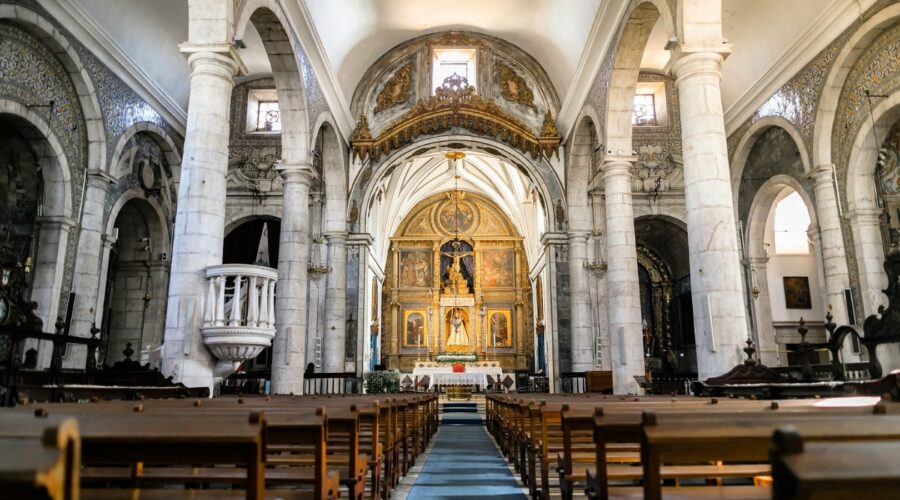
Matt Chandler: Leading Village Church with Vision and Purpose
Who is Matt Chandler?
Matt Chandler is the Lead Pastor of The Village Church, a multi-site church based in Flower Mound, Texas, with nine campuses across the Dallas-Fort Worth metroplex. He has been serving in this role since the church’s inception in 1999.
Chandler is known for his engaging preaching, emphasis on authentic community, and commitment to reaching the unchurched. His sermons are characterized by their practical insights, humor, and a passion for the Gospel message.
Leadership Style
- Visionary: Chandler has a clear vision for The Village Church, which he articulates through the church’s core values and strategic goals.
- Relational: He prioritizes building strong relationships with his staff, church members, and the community.
- Delegating: Chandler empowers his team to take ownership of their responsibilities and lead in their respective areas.
- Authentic: He is transparent about his own vulnerabilities and mistakes, fostering a culture of honesty and accountability within the church.
The Village Church
History and Mission
The Village Church was founded in 1999 by Matt Chandler and a small group of families who desired to create a community where people could encounter God and experience authentic relationships.
The church’s mission is “to lead people into a growing relationship with Jesus Christ.” This mission is reflected in all aspects of the church’s ministry, from its worship services to its community outreach programs.
Growth and Expansion
The Village Church has experienced significant growth over the years, expanding to nine campuses across the Dallas-Fort Worth area. This growth can be attributed to Chandler’s leadership, as well as the church’s focus on creating a welcoming and engaging environment for all.
In addition to its physical campuses, The Village Church also has a strong online presence, with a dedicated website and social media platforms that reach millions of people worldwide.
Core Values
The Village Church operates on six core values:
- Gospel-Centered: The church believes that the Gospel message is central to everything they do.
- Community-Driven: The Village Church prioritizes building strong and authentic relationships within the church body.
- Mission-Focused: The church is committed to fulfilling its mission of leading people into a relationship with Jesus Christ.
- Discipleship-Oriented: The Village Church invests in the spiritual growth and development of its members.
- Servant-Minded: The church encourages its members to serve others both within and outside the church community.
- Excellence-Driven: The Village Church strives for excellence in all areas of ministry, from worship to community outreach.
Impact and Legacy
Community Involvement
The Village Church is deeply involved in its surrounding community. The church has partnered with several organizations to provide support and assistance to those in need, including the homeless, the hungry, and families in crisis.
Missionary Work
The Village Church is committed to global missions. The church supports missionaries around the world who are working to spread the Gospel message and make a difference in their communities.
Influence on Christianity
Matt Chandler and The Village Church have had a significant influence on Christianity, both in the United States and internationally. Chandler’s preaching and leadership have inspired countless Christians to pursue a deeper relationship with God and to live out their faith more fully.
The Village Church has also been a pioneer in developing innovative ministry models and resources that have been adopted by other churches around the world.
Conclusion
Matt Chandler and The Village Church have made a significant contribution to the Christian community and beyond. Chandler’s visionary leadership, emphasis on authentic community, and unwavering commitment to reaching the unchurched have led to the growth and impact of The Village Church both locally and globally.
The Village Church’s core values of Gospel-centeredness, community, mission, discipleship, servanthood, and excellence serve as a model for other churches seeking to make a difference in the world.
As Matt Chandler continues to lead The Village Church into the future, we can expect to see even greater impact and influence from this vibrant and growing community of faith.

Illuminate Your Faith: A Comprehensive Guide to Church Windows
Church windows are not mere architectural embellishments; they are portals to the sacred, illuminating the interior with ethereal beauty and conveying profound spiritual messages. From their humble origins to their breathtakingly intricate designs, these windows have played a vital role in the history, symbolism, and artistic expression of Christian faith.
History of Church Windows
Origins and Early Development
The earliest church windows date back to the 4th century, serving a practical purpose of providing natural light and ventilation. Made of simple, clear glass, they allowed daylight to flood the interior, creating a welcoming and uplifting atmosphere.
Romanesque and Gothic Periods
During the Romanesque period (11th-12th centuries), windows became larger and more elaborate, often featuring stained glass. These colorful windows depicted biblical scenes, saints, and other religious subjects, serving as vibrant teaching tools for the illiterate masses.
The Gothic period (12th-15th centuries) witnessed a dramatic transformation in church windows. The invention of the pointed arch and ribbed vaulting allowed for larger windows filled with intricate stained glass. These windows became prominent features of Gothic cathedrals, illuminating the interior with a kaleidoscope of light and color.
Symbolism and Meaning
Church windows are not just decorative elements; they are rich in symbolism and convey profound spiritual messages.
Light as a Metaphor
The most fundamental symbolism associated with church windows is light itself. Light represents the presence of God, illuminating the darkness and guiding the soul toward enlightenment.
Biblical Imagery
Many church windows depict biblical scenes, characters, and symbols. These images serve as visual reminders of the stories and teachings of the Bible, helping viewers connect with the divine.
Saints and Patrons
Windows often feature images of saints and patrons, representing the intercessors and protectors of the church. These figures provide inspiration and comfort to worshippers.
Types of Church Windows
There are various types of church windows, each with its own unique characteristics:
- Stained Glass Windows: These are the most iconic type of church windows, created by embedding colored glass pieces into lead frames. They are renowned for their vibrant colors and intricate designs.
- Painted Glass Windows: These windows are made by painting images or designs directly onto glass. They offer a more detailed and realistic style than stained glass.
- Etched Glass Windows: These windows are etched with designs using acid, creating a frosted effect that allows light to pass through while maintaining privacy.
- Leaded Glass Windows: Similar to stained glass, leaded glass windows use clear glass pieces held together by lead frames. However, they do not contain colored glass.
Restoration and Preservation
Church windows are precious and irreplaceable artifacts that require careful restoration and preservation.
Restoration Techniques
Restoration techniques for church windows include:
- Cleaning and repair of glass pieces
- Replacement of damaged lead frames
- Repainting or etching of images
- Reinstallation of windows using proper glazing techniques
Preservation Measures
To preserve church windows, it is essential to:
- Control humidity levels to prevent damage from moisture
- Install UV protection to guard against fading and discoloration
- Conduct regular inspections to identify potential problems early on
Conclusion
Church windows are remarkable works of art that transcend their aesthetic beauty. They serve as portals to the sacred, illuminating the interior with ethereal light and conveying profound spiritual messages. Through their rich symbolism, captivating designs, and historical significance, these windows continue to inspire and connect generations of worshippers.